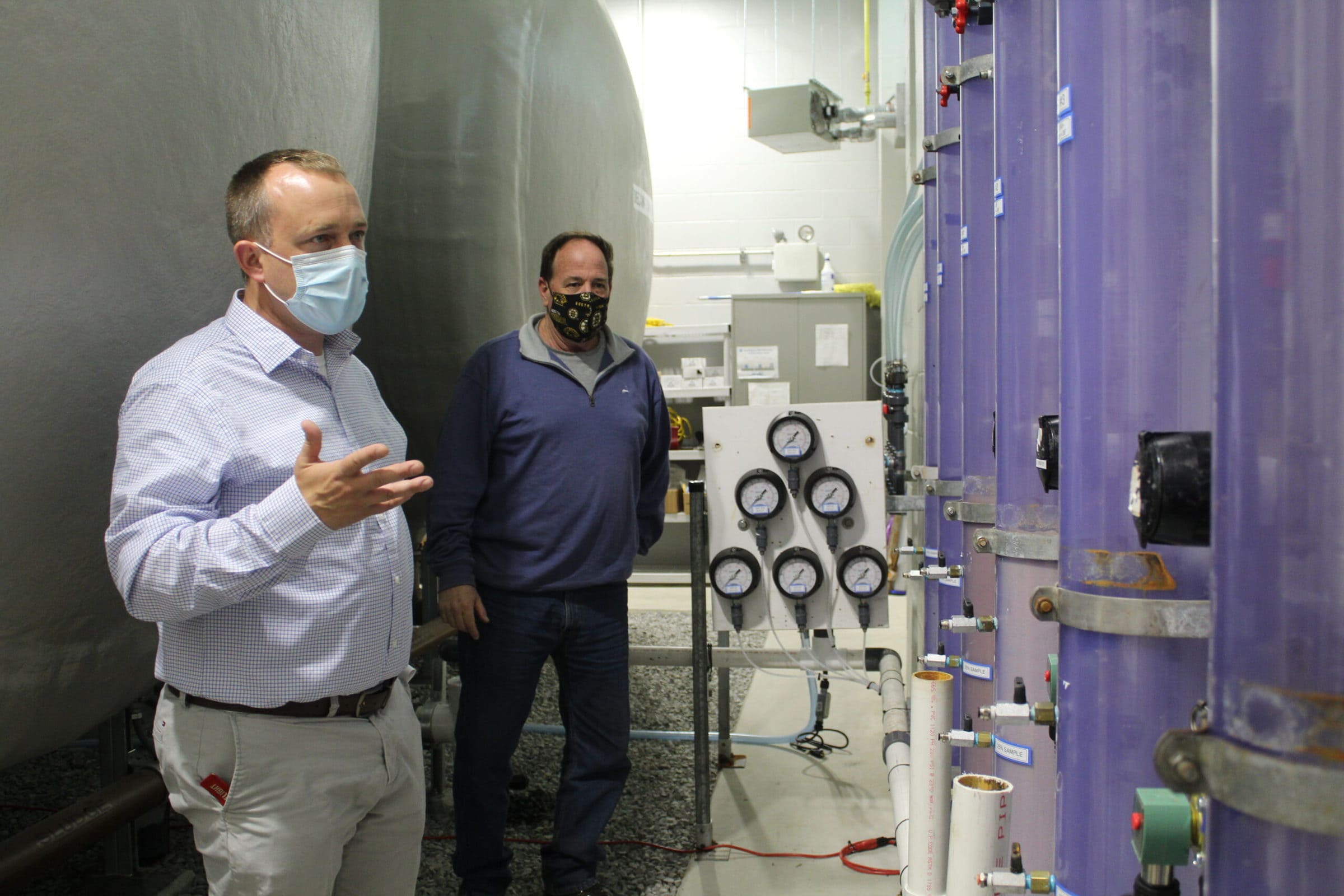
SHREWSBURY – Filtration systems would not be able to fully remove hexavalent chromium from Shrewsbury’s water supply, instead making a slight dent in the chemical’s prevalence, according to a recent presentation to the Board of Selectmen.
Additionally, work to install a filtration system would cost about $7.7 million and would nearly double the size of the water treatment plant.
As a result, Shrewsbury is not moving forward with any new filtration systems, for the time being, opting instead to continue monitoring for hexavalent chromium, which has continued to be a topic of discussion in the town for several years, though rates are now well below federal standards for total chromium.
Hexavalent chromium discussion dates back to 2013
Town staff and a consultant presented their next steps to the Shrewsbury Board of Selectmen on March 22, almost a year and a half after they re-started a pilot program assessing hexavalent chromium in the town’s water supply and seeking ways to filter it.
“We’ve been monitoring, taking samples on a fairly routine basis since 2016 and continue to do so, and we have not seen a vast change in the hexavalent chromium concentrations,” Director of the Department of Public Works Jeffery Howland told the selectmen.
Hexavalent chromium is used in welding, chromate painting and electroplating. It can be harmful to the eyes, skin and respiratory system, according to the Centers for Disease Control and Prevention.
Town staff and consultants believe there is a plume of hexavalent chromium that has pooled together, but it hasn’t moved.
It was documented in 2013 and 2014 through testing mandated by the Environmental Protection Agency, with results showing between 3 and 4 parts per billion (ppb) of hexavalent chromium in town water. That, the town said, was under the EPA and Massachusetts Department of Environmental Protection’s (DEP) standards of 100 ppb for total chromium.
In 2015, though, a report from the Environmental Working Group listed Shrewsbury, Danvers and a Cape Cod community as the three Massachusetts communities with the highest concentrations of hexavalent chromium.
The town began efforts to track down the source of the hexavalent chromium as well as treat it.
Tests in 2016 then showed concentrations above 100 ppb in four test wells drilled on the property line with Metso on Bowditch Drive, according to Justine Carroll, who is the Vice President of Tata & Howard and a consultant working with Shrewsbury.
“But it is not coming from Metso,” Howland said of the chemical’s source. “It’s coming from upgradient of Metso.”
As part of their work, the town installed a well with a slightly larger diameter. The levels of hexavalent chromium had dropped to the point that the tests were not detecting the substance, however, Carroll said.
She said the town and consultants believe that a drought and the fact that the water table was different back in 2016 contributed to this change in levels.
The town tried other methods to find the source of the hexavalent chromium and test filtration. But Carroll said they ultimately ran out of time in part because Shrewsbury began construction of a new plant in 2017 and the town needed to demolish the former plant.
Since 2016, the average concentration of hexavalent chromium in Shrewsbury’s finished water is around 3.6 ppb, Water and Sewer Superintendent Dan Rowley said.
The town has continued its search for the source of the chemical.
Howland said DEP was also working to track down the source. But it has not found a confirmed responsible party, according to Carroll.
The DEP has further stopped its program over the last several years mainly because the issue of PFAS chemical contaminations took precedence.
Carroll said it is still on their radar and the agency is interested in pursuing another location for additional test wells, though.
Pilot testing results
Shrewsbury still resumed its latest round of pilot testing in 2020, completing testing in a matter of months and generating a report in July of last year.
As part of the testing, Shrewsbury seeded its water with 100 ppb of hexavalent chromium.
According to Howland, two technologies tested were able to remove between 93% and 96% of the hexavalent chromium in tests.
Neither would likely be able to replicate those results on town water, though, due to its lower concentration of hexavalent chromium.
Howland said that AdEdge, a sub-consultant of Tata & Howard indicated that some hexavalent chromium would still pass through through the filter of even a preferred option, meaning Shrewsbury could expect a reduction of 1 ppb or less from their current rates of around 3.6 ppb.
Howland told Shrewsbury town leaders that there are no known methods that would get Shrewsbury down to a nondetectable level of hexavalent chromium.
That fact coupled with the estimated $7.7 million price tag and additional annual costs of $1 million to maintain the filtration system had town officials feeling cautious about implementing new filtration strategies as of this March 22 selectmen meeting.
Pilot testing is also needed for any additions onto the water treatment plant, Howland said.
“I’m not sure that it makes sense to go forward with a $7.7 million answer to just really have the same result,” said Selectman Beth Casavant.
Howland suggested continuing to test quarterly.
If the concentration of hexavalent chromium documented in testing increases, staff may return to the selectmen with a different suggestion.
RELATED CONTENT
Shrewsbury wrapping up hex chrome pilot
Superintendent of Water and Sewer provides hex-chrome pilot program update
Shrewsbury completes unidirectional flushing

















